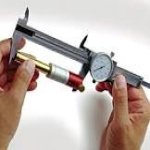I was watching a video from a top long range shooter in the US and he said most elite long distance shooters full length resize and bump the shoulder back .020".
Question is how do you measure that distance the shoulder is moved back. Seems kind of subjective when dealing with .020.
Question is how do you measure that distance the shoulder is moved back. Seems kind of subjective when dealing with .020.









































































